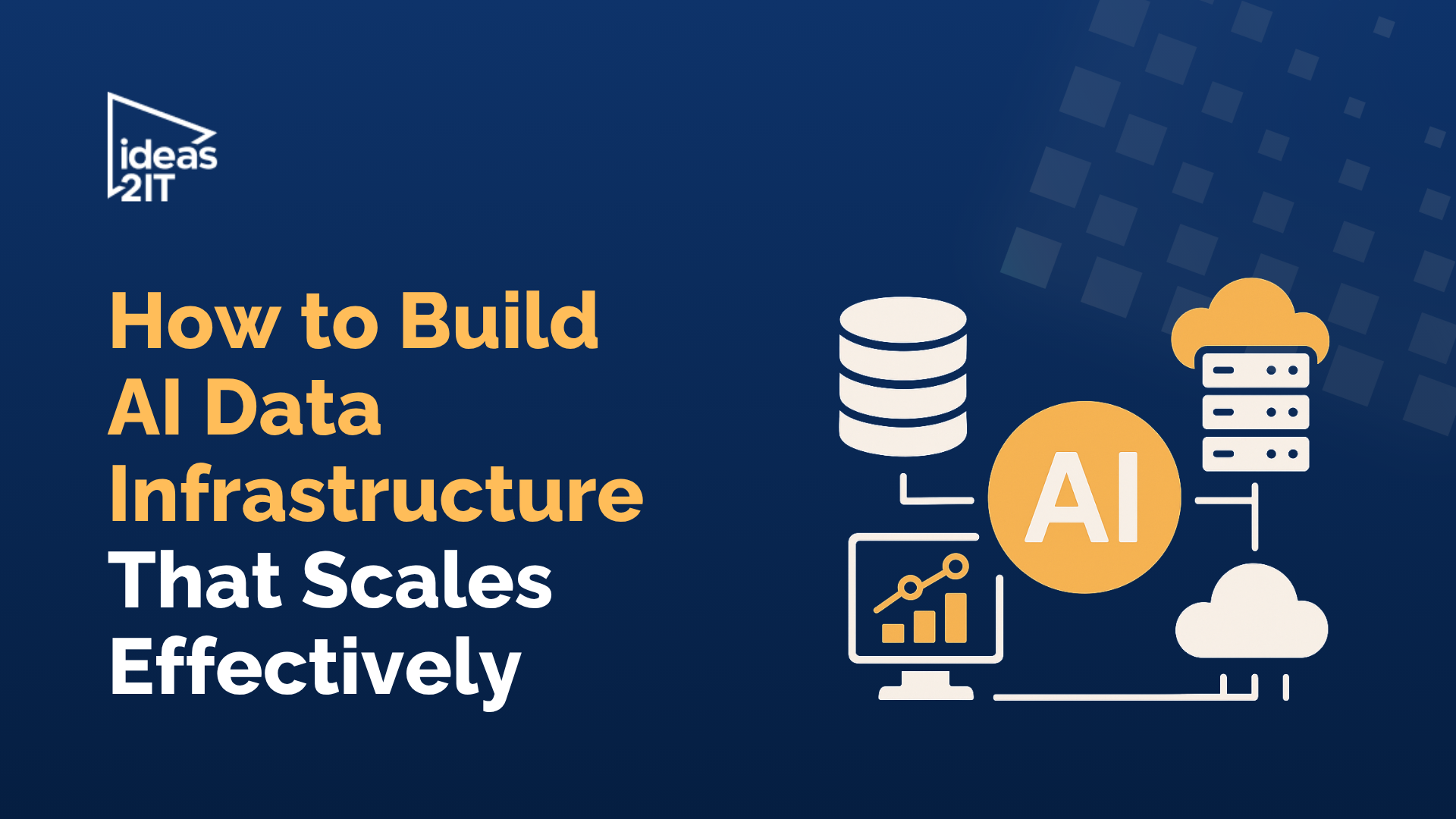Comprehensive Snowflake Migration Guide 2025
TL'DR
- Edge AI is transforming how enterprises process and respond to audio data—right at the source.
- In 2025, audio classification is no longer a cloud-only task.
- From industrial fault detection to voice-driven healthcare diagnostics, running ML models on embedded devices means lower latency, enhanced privacy, and smarter autonomy.
- This blog breaks down the architecture, risks, and strategic decisions needed to make audio intelligence work at the edge.
In nearly every industry, data has become an indispensable resource. In fact, according to a MicroStrategy study, 60% of organizations now rely on data to drive new business opportunities and optimize spending.
But despite the fact that this trend continues to grow, many companies are left scratching their heads when it comes to managing data. That’s where data warehousing comes in. In today’s market, Snowflake stands out as one of the most popular data warehousing solutions. And for good reason: It’s a robust, high-performance, and user-friendly system.
Moving From On-Premise to Cloud: Is It Really Worth It?
If you’re still using a traditional on-prem system, you may be wondering, “Why migrate to the cloud?” There are many benefits. But, in short, by migrating from on-prem to cloud data warehousing, you’ll be able to gain a competitive edge in your industry.
That’s because the increase in agility, reliability, security, and flexibility allows you to effectively manage and leverage your data like never before.
What Is a Snowflake Data Warehouse?
At its core, Snowflake is a powerful Database Management System (DBSM) that offers both cloud computing and cloud storage. And, because its storage and compute functions are decoupled, they can be independently scaled. This provides organizations with immense flexibility when it comes to handling high volumes of big data.
Snowflake comes in the form of software as a service (SaaS) and can be built on top of Google Cloud Platform (GCP), Microsoft Azure, or Amazon Web Services (AWS). As a result, it’s entirely run on public cloud infrastructure. Plus, compared to other data warehousing solutions, the Snowflake platform is especially robust and low-maintenance.
So, is Snowflake data warehousing the best software on the market—as evidenced by the Teradata vs Snowflake debate? The question can only be answered in terms of your own unique IT needs and resources. Speak to a software solutions specialist to find out if Snowflake is the right fit for your business.
Moving Data to Cloud Warehousing: What Types of Data Can I Migrate to Snowflake?
Snowflake is a powerful relational database that supports a wide range of data types, making it an ideal choice for cloud data warehousing.
- Structured Data:
Snowflake handles traditional structured data formats such as CSV and TSV. These files use valid single-byte delimiters and are commonly used for table-like datasets. - Semi-Structured Data:
In addition to structured data, Snowflake natively supports several semi-structured formats, including:- JSON
- Avro
- ORC
- XML
- Parquet
- JSON
- These formats can be ingested without requiring strict schemas, offering flexibility for evolving data models.
- Unstructured Data:
For unstructured content such as audio recordings, medical images, PDFs, or video files, Snowflake uses Snowpark, its developer framework. Snowpark enables storing, processing, and querying unstructured data within Snowflake’s environment.
Structured and semi-structured data migrations follow a straightforward process. However, migrating unstructured data involves additional steps and architectural considerations. It is best planned as a separate phase in your overall cloud migration strategy.
Pro Tip:
For unstructured data like images or logs, use Snowpark along with external stages to manage performance and cost more effectively.
How to Prepare for a Snowflake Cloud Data Migration
Before you migrate data to cloud platforms of any sort, you first need to lay the groundwork. This means you’ll want to capture all the necessary information about your existing IT environment. This includes the documentation and data that will need to be moved. For example, when migrating from an Oracle on-prem DB to a Snowflake cloud DB, you must identify which databases and database objects need to be moved. Objects and schemas belonging to Oracle (such as DBSNMP, SYS, and others) needn’t be touched.

But don’t worry about these; trying to tackle them now will only serve to inject risk and cause delays in your on-premise to cloud migration.
Keep in mind that you may encounter some broken objects as you prepare for data migration in cloud warehousing. But don’t worry about these; trying to tackle this now will only serve to inject risk and cause delays in your on-premise to cloud migration. Instead, prioritize the migration of your essential data sets and enterprise data warehouses (EDW).If you’re looking for some project management advice as you prepare to move data to the cloud, check out this Snowflake guide. It includes special emphasis on topics like effective planning and data migration architecture.
How to Migrate Data From On-Prem to Snowflake Cloud Data Warehouse: Step-by-Step Process
In this section, we’ll walk through how to migrate data from an on-premise system to Snowflake's cloud data warehouse. By following these three simple steps, you can complete a basic data migration in just a few minutes.
For larger workloads or complex pipelines, Snowflake offers support for advanced ETL tools and cloud-native integration resources. But for now, let’s focus on a straightforward migration using a CSV example to demonstrate how user-friendly the Snowflake process can be.
Step 1: Select and Split Your Data
Migrating data from your local environment to the cloud begins with identifying your source files. Suppose you have a large CSV file you want to move to Snowflake.
To make this process efficient, start by splitting the file into smaller chunks. You can use a file splitter like GSplit or an ETL tool. Splitting large files allows you to take advantage of Snowflake’s parallel processing capabilities, speeding up the transfer and reducing resource strain.
Step 2: Migrate Data to Snowflake Staging Area
To stage the data, open the SnowSQL command line client (CLI). This is a standard command-line environment that can be downloaded directly from the Snowflake platform.
You can now begin staging your local files. To do this, simply use a PUT command written in Snowflake syntax.
Note that you can set the level of parallelization in the CLI to any integer between 1 and 100. Keep in mind: the higher the number, the more processing power is required to execute the command effectively.
You can also choose to auto-compress your files during upload. If your files aren’t already zipped, SnowSQL will compress them automatically. This setting is enabled by default (TRUE). However, if you’ve already zipped the files manually, make sure to set the auto-compress flag to FALSE to avoid redundant compression.
Step 3: Verify Your Migration to the Cloud
Once the process is complete, you’ll have successfully transferred your local CSV files to Snowflake’s internal stages.
To confirm this, use the ls command in the CLI to list all files in your staging directory. You should now see the files you just moved, along with any that were previously uploaded.
From this staged data, you can now:
- Create tables
- Load the data
- Start running queries within the Snowflake dashboard
You can also follow this exact procedure to move data that’s stored in semi-structured file formats, such as JSON or Parquet.
That’s all there is to it. With Snowflake, cloud data migration is fast, efficient, and accessible, even for basic file-based use cases.
Migrating Data Doesn’t Have to Be Complicated. Get the Power of Snowflake Data Warehouse, With Ideas2IT
Data migration to the cloud is an important step in your organization’s digital transformation. This is especially true as managing, storing, and analyzing data becomes increasingly critical to business processes.
Snowflake cloud services offer businesses a rich array of features and improvements over traditional on-prem solutions. Plus, migrating from on-prem to the cloud isn’t as daunting as you may have thought—especially with the right custom software developer by your side.Now that you understand how to move to the cloud, consider partnering with a software development company that can help you build the Snowflake digital assets you need.
At Ideas2IT, we've been assisting businesses for over 13 years. From healthcare to the financial sector, our expertise extends to on-prem to cloud migration & managing Snowflake cloud services. Ready to unlock the full potential of your data? Start your Snowflake journey today with Ideas2IT. Contact us now to supercharge your on-prem to cloud migration! Contact us today to get started on your move to cloud computing.









%20AI%20in%20Data%20Quality_%20Cleansing%2C%20Anomaly%20Detection%20%26%20Lineage.avif)















